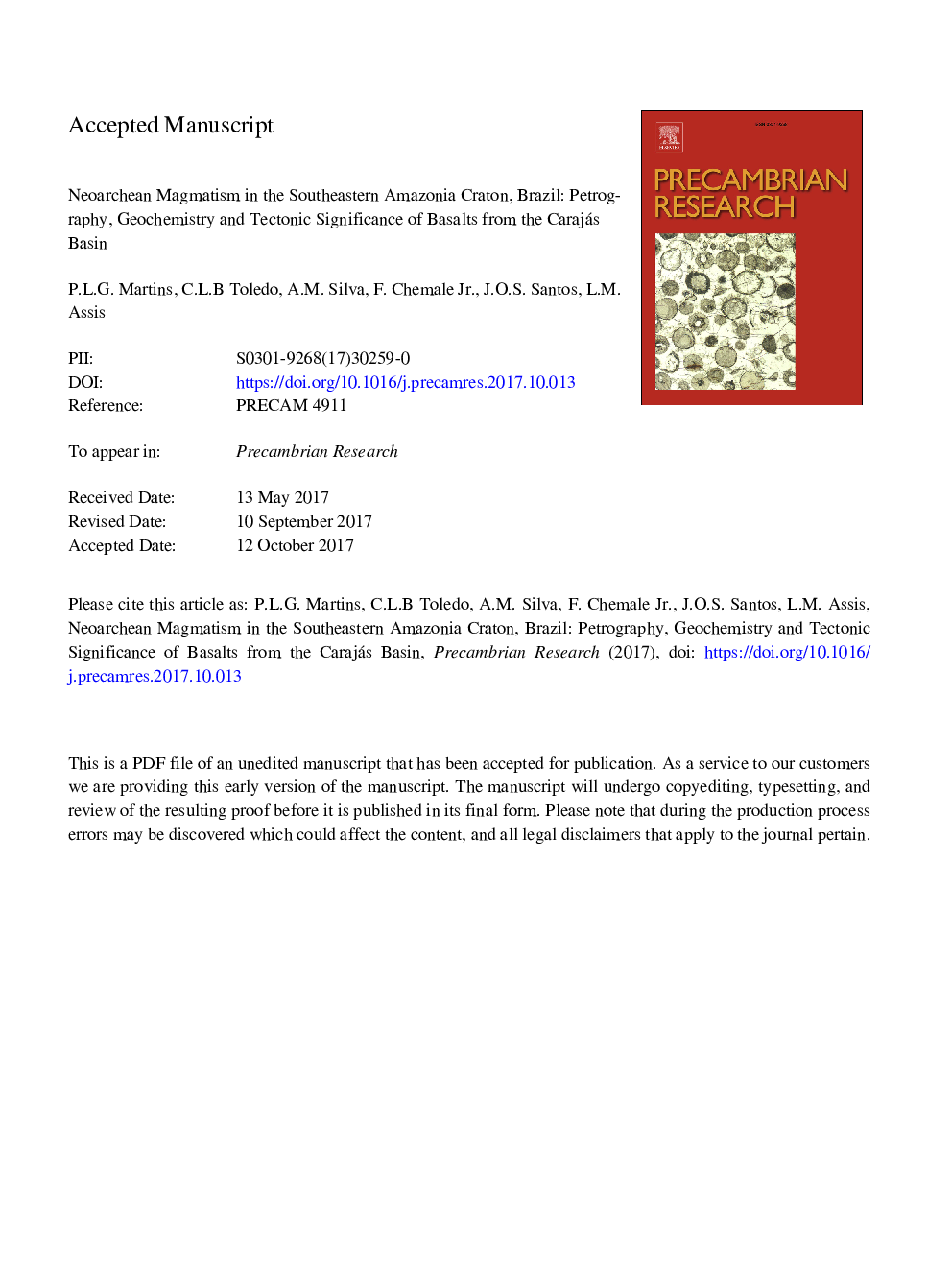| کد مقاله | کد نشریه | سال انتشار | مقاله انگلیسی | نسخه تمام متن |
|---|---|---|---|---|
| 8912777 | 1639573 | 2017 | 46 صفحه PDF | دانلود رایگان |
عنوان انگلیسی مقاله ISI
Neoarchean magmatism in the southeastern Amazonian Craton, Brazil: Petrography, geochemistry and tectonic significance of basalts from the Carajás Basin
دانلود مقاله + سفارش ترجمه
دانلود مقاله ISI انگلیسی
رایگان برای ایرانیان
کلمات کلیدی
موضوعات مرتبط
مهندسی و علوم پایه
علوم زمین و سیارات
ژئوشیمی و پترولوژی
پیش نمایش صفحه اول مقاله

چکیده انگلیسی
The Neoarchean Carajás Basin is situated in the northern part of the Carajás Mineral Province. The main rock assemblages of this basin consist of volcano-sedimentary sequences composed predominantly of mafic volcanic rocks, and banded iron formations. The Grão-Pará Group (GGP) is the dominant sequence in the basin. The basalts of Grão-Pará Group (Parauapebas Formation) are investigated using petrography, geochemistry and geochronology to decipher the nature and tectonic setting of the magmatism. These volcanic rocks occur in extensive succession of massive or amygdaloidal lava flows at least 370 m in thickness. The basalts are grayish green amygdaloidal, porphyritic, aphanitic or fine-grained, and hypocrystalline. The primary mineral assemblages consist predominantly of clinopyroxene and plagioclase. On the other hand, the secondary mineral assemblages consists mainly of chlorite, albite, Fe-epidote, quartz and calcite, and are interpreted as product of submarine hydrothermal alteration and/or sub-greenschist facies metamorphism. Geochemical investigations on volcanic rocks of the Parauapebas Formation show 51.12-55.26â¯wt% SiO2, 0.69-0.92â¯wt% TiO2, 7.02-12.35â¯wt% FeO, and MgO ranging from 4.38 to 7.38â¯wt%. Moreover, the rocks are sub-alkaline, plot in the transitional and calc-alkaline fields, and show either arc-like trace element patterns or similar to those of the upper continental crust. These features include LILE and LREE enrichment and Nb and Ti depletion. SHRIMP zircon U-Pb dating constrains the crystallization ages at 2749â¯Â±â¯6.5 and 2745â¯Â±â¯5â¯Ma (Early Neoarchean) regarding volcanic mafic rocks. Our data suggest that the basaltic rocks were derived from the subcontinental lithospheric mantle affected by upper continental crustal components. Although this volcanism could be originated by the opening of a back-arc continental basin, a rift setting is more plausible on the basis of regional geology. Thus, the Carajás Basin was likely formed in an extensional regime related to a rift setting at ca. 2.75â¯Ga. We propose that this rift basin is related to post-orogenic setting in the passage from the Mesoarchean to the Neoarchean. The rifting process could be associated to a slab breakoff and subsequent asthenosphere upwelling that provided heat for partial melting of the lithospheric mantle.
ناشر
Database: Elsevier - ScienceDirect (ساینس دایرکت)
Journal: Precambrian Research - Volume 302, November 2017, Pages 340-357
Journal: Precambrian Research - Volume 302, November 2017, Pages 340-357
نویسندگان
Pedro Luiz Gomes Martins, Catarina Labouré Bemfica Toledo, Adalene Moreira Silva, Farid Chemale Jr, João Orestes Schneider Santos, Luciano Mozer Assis,